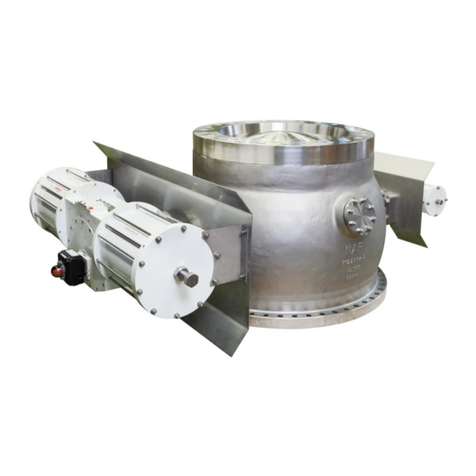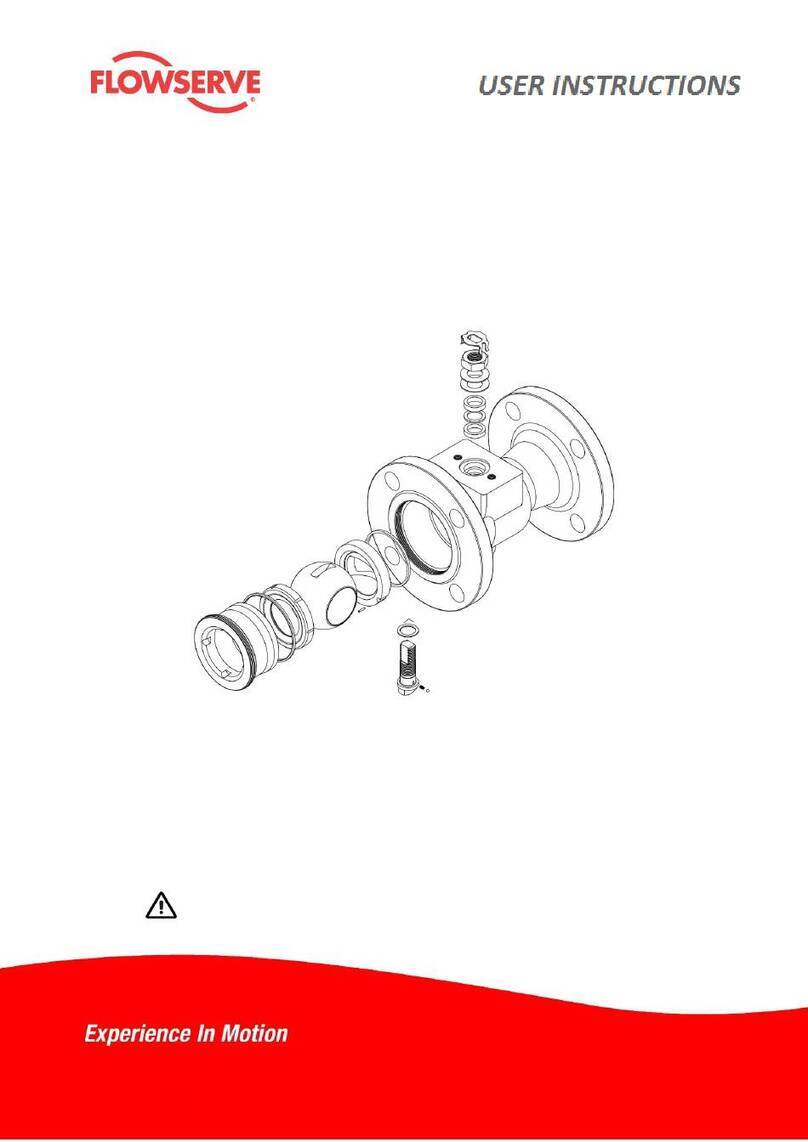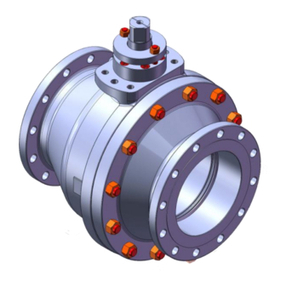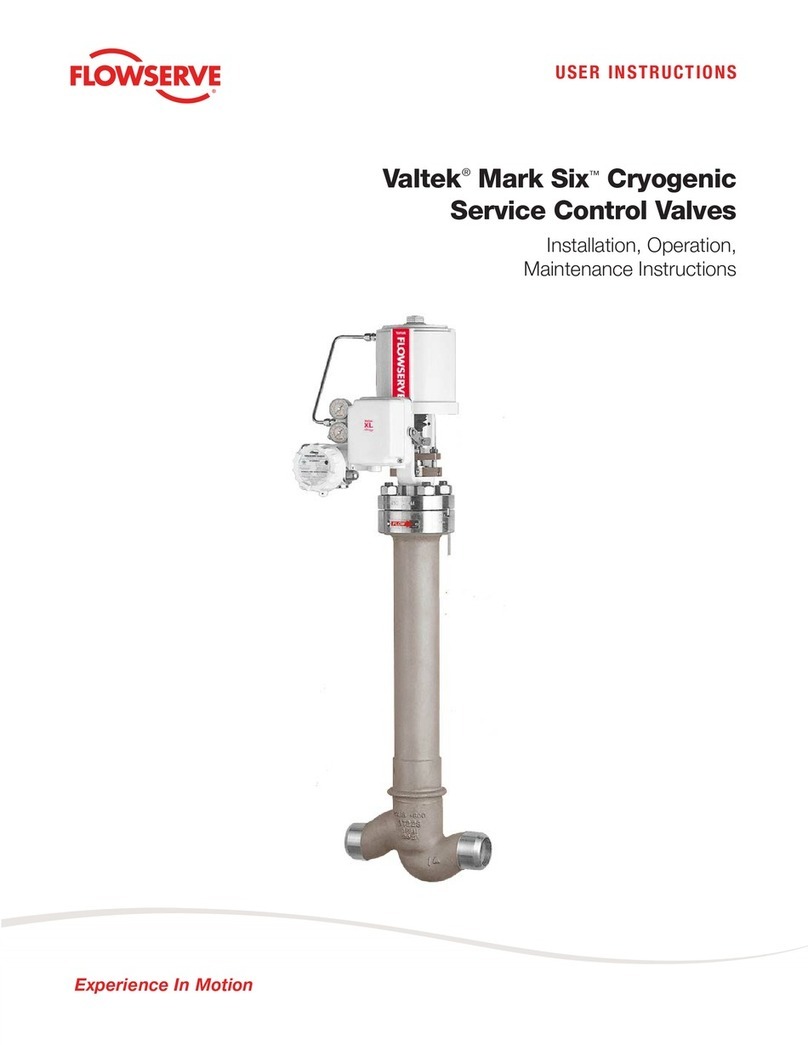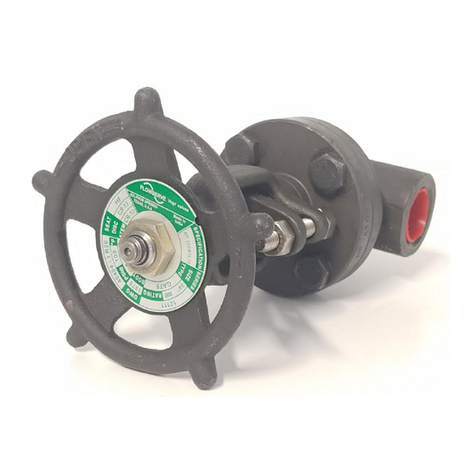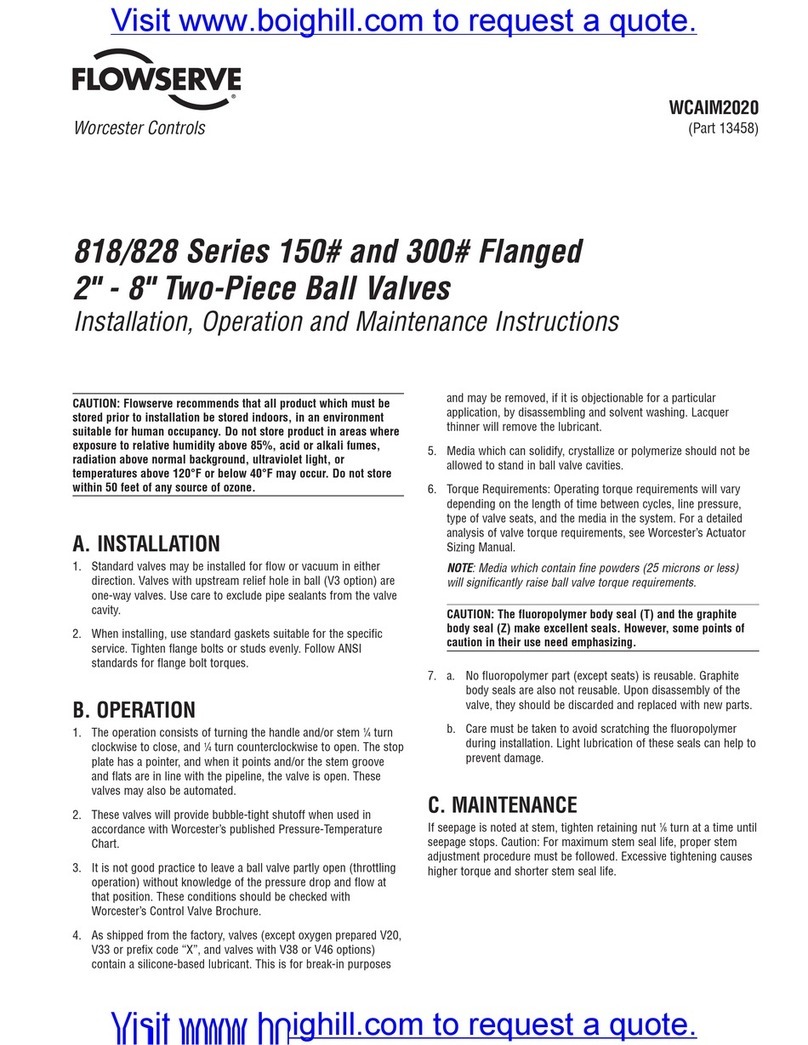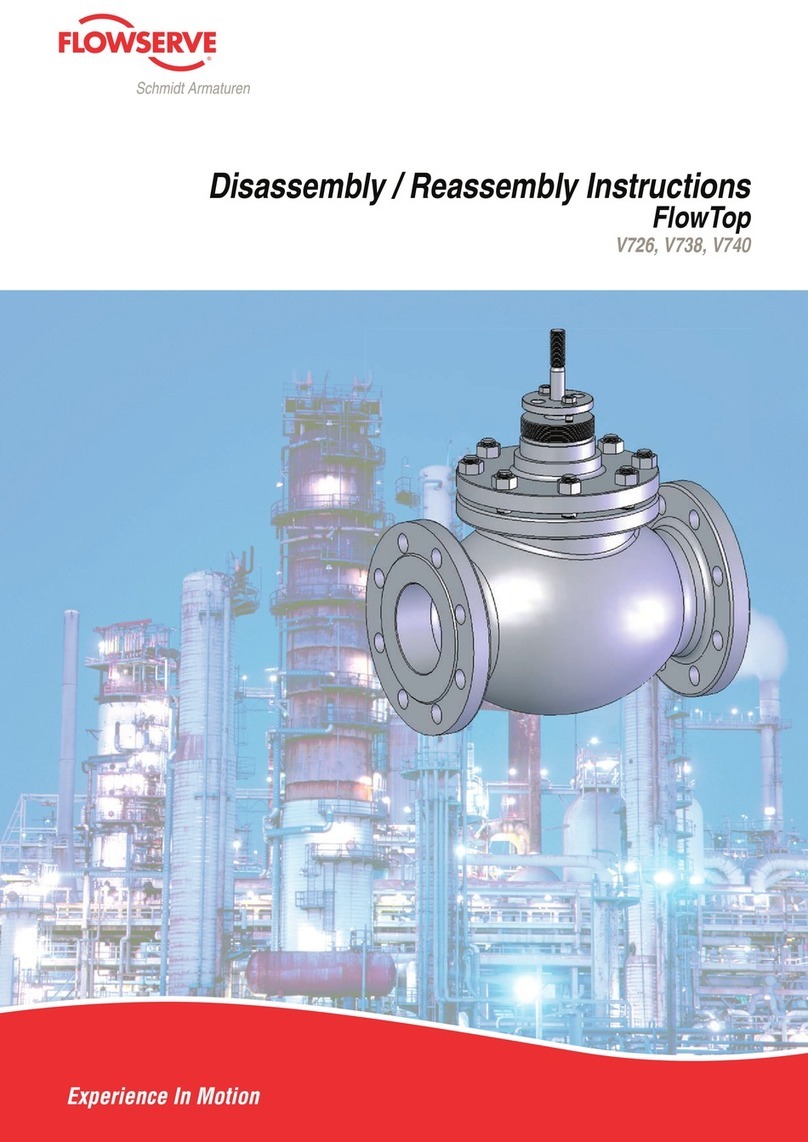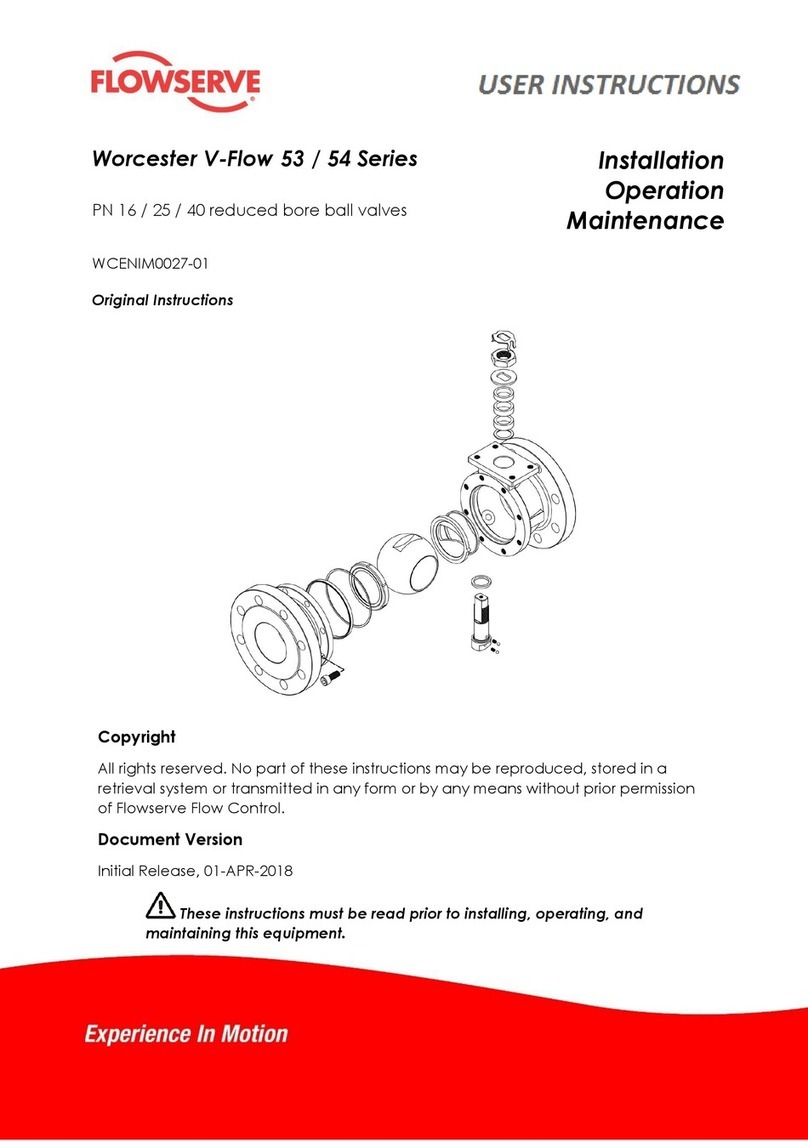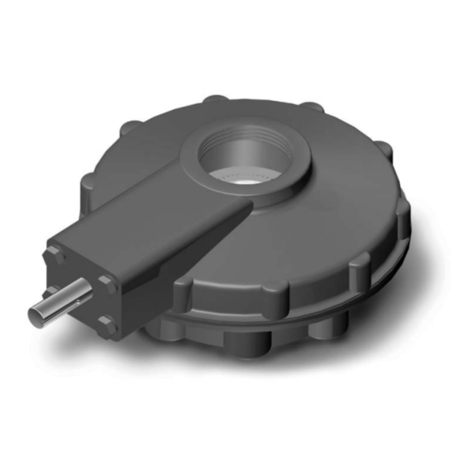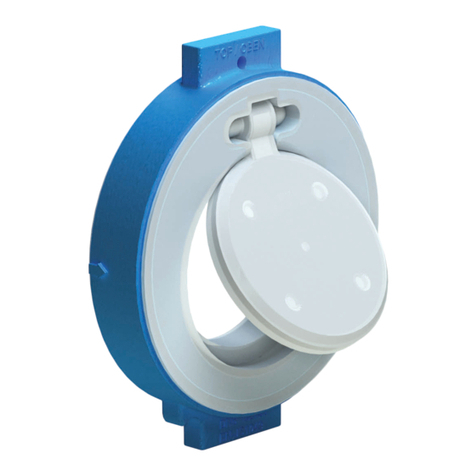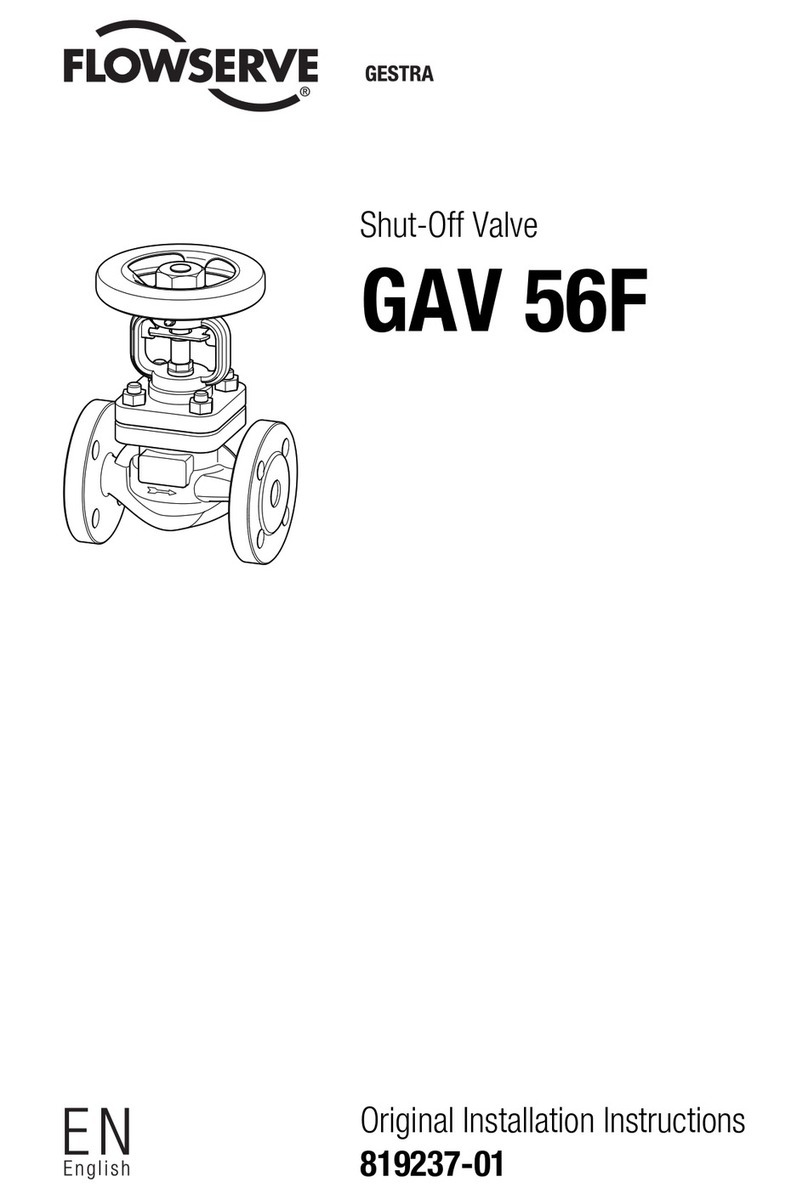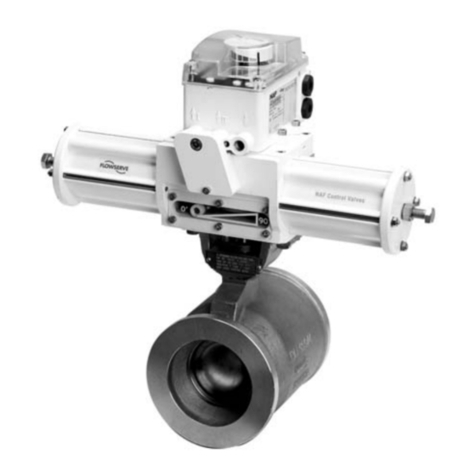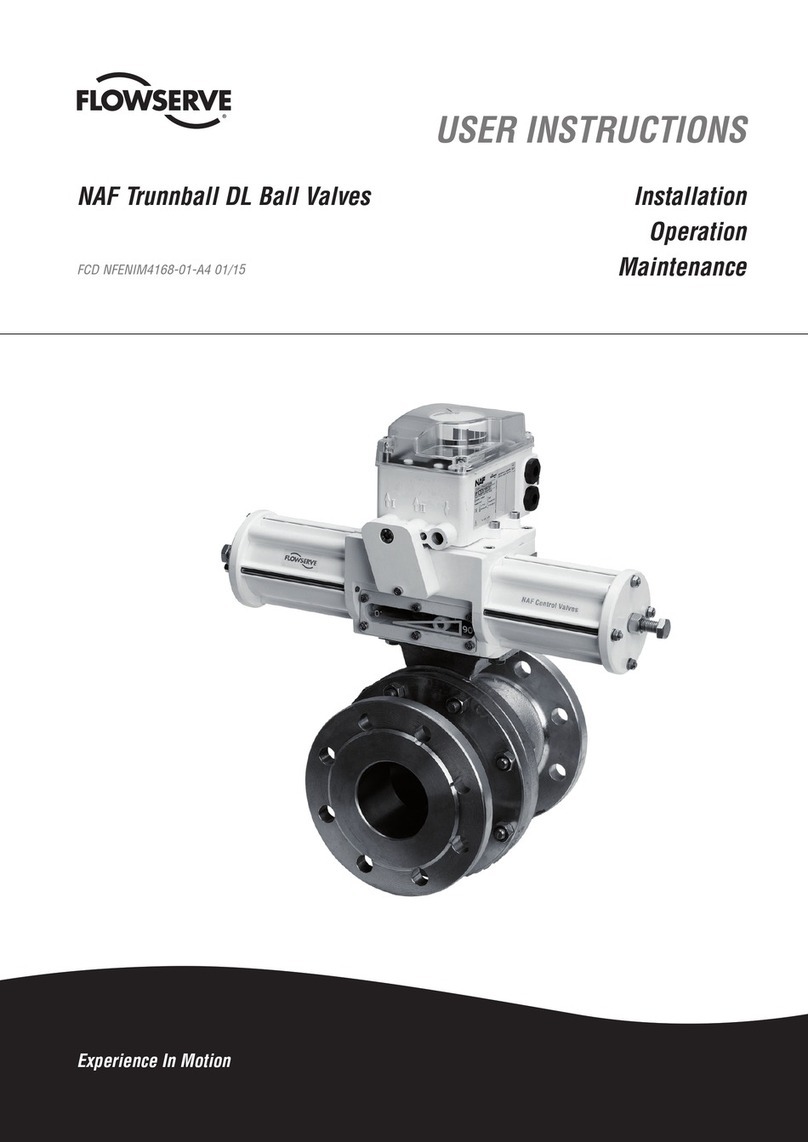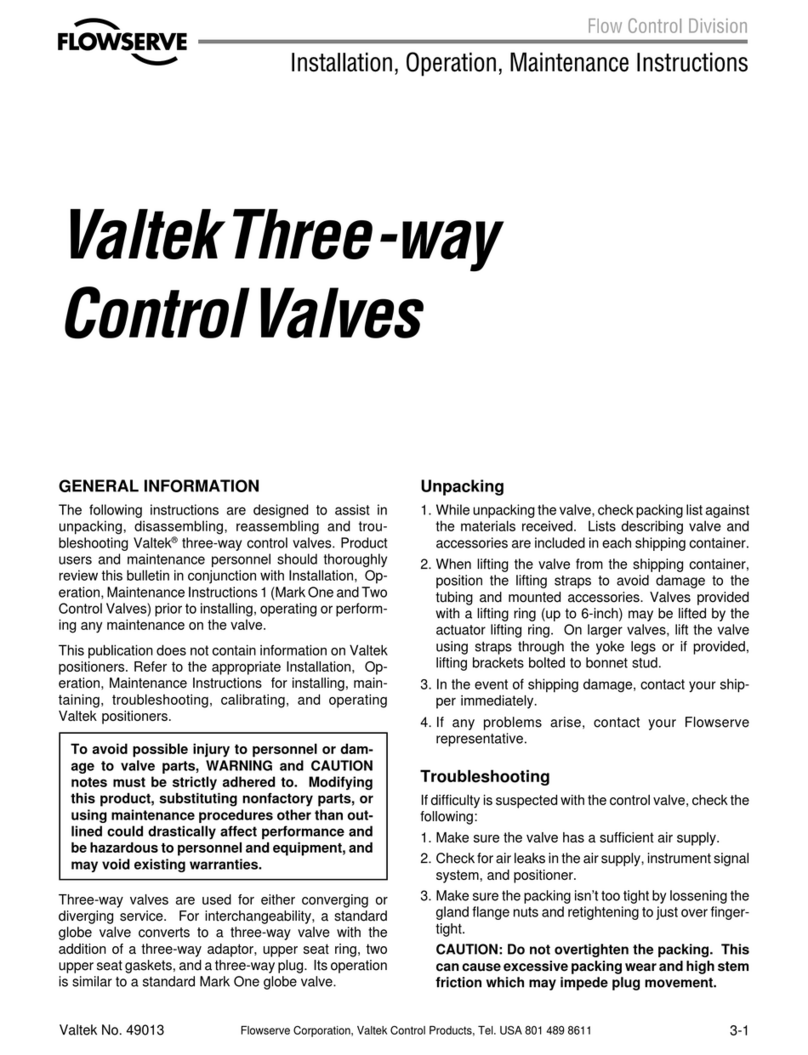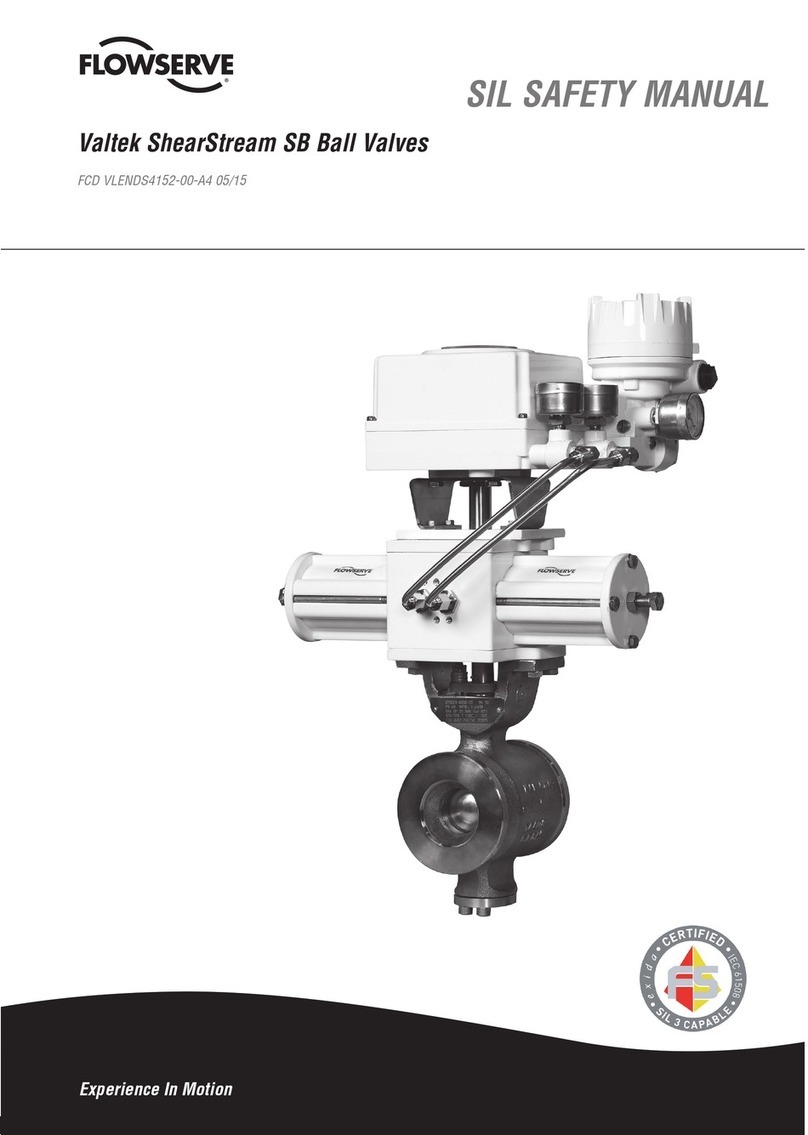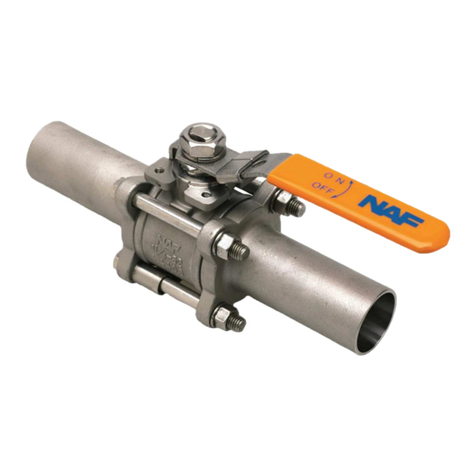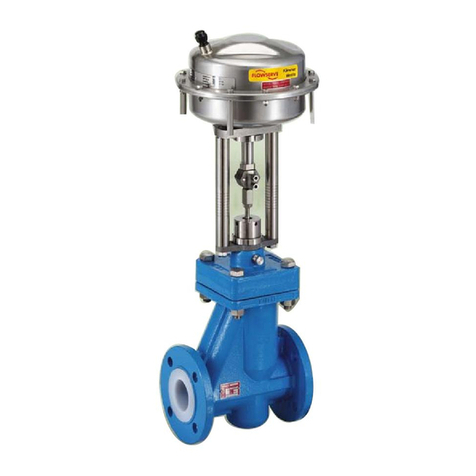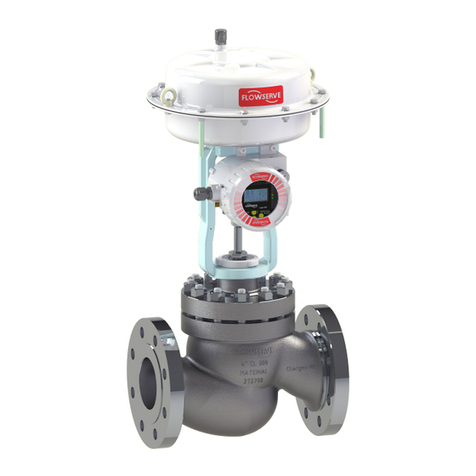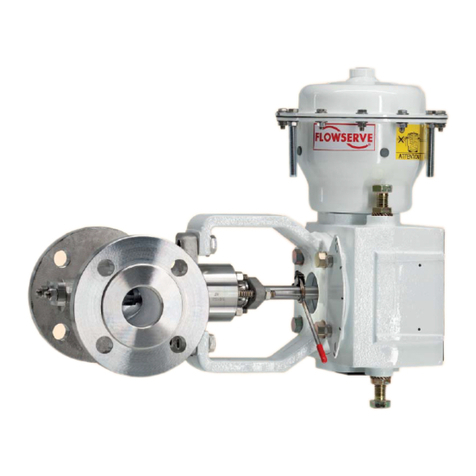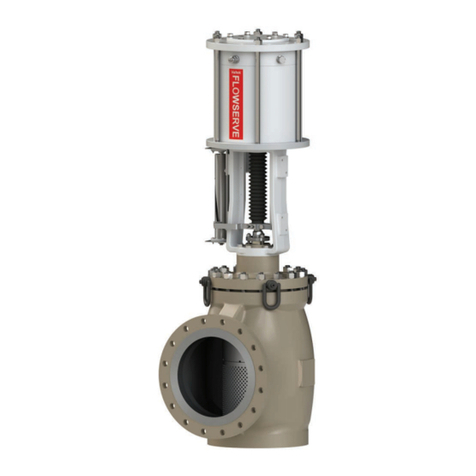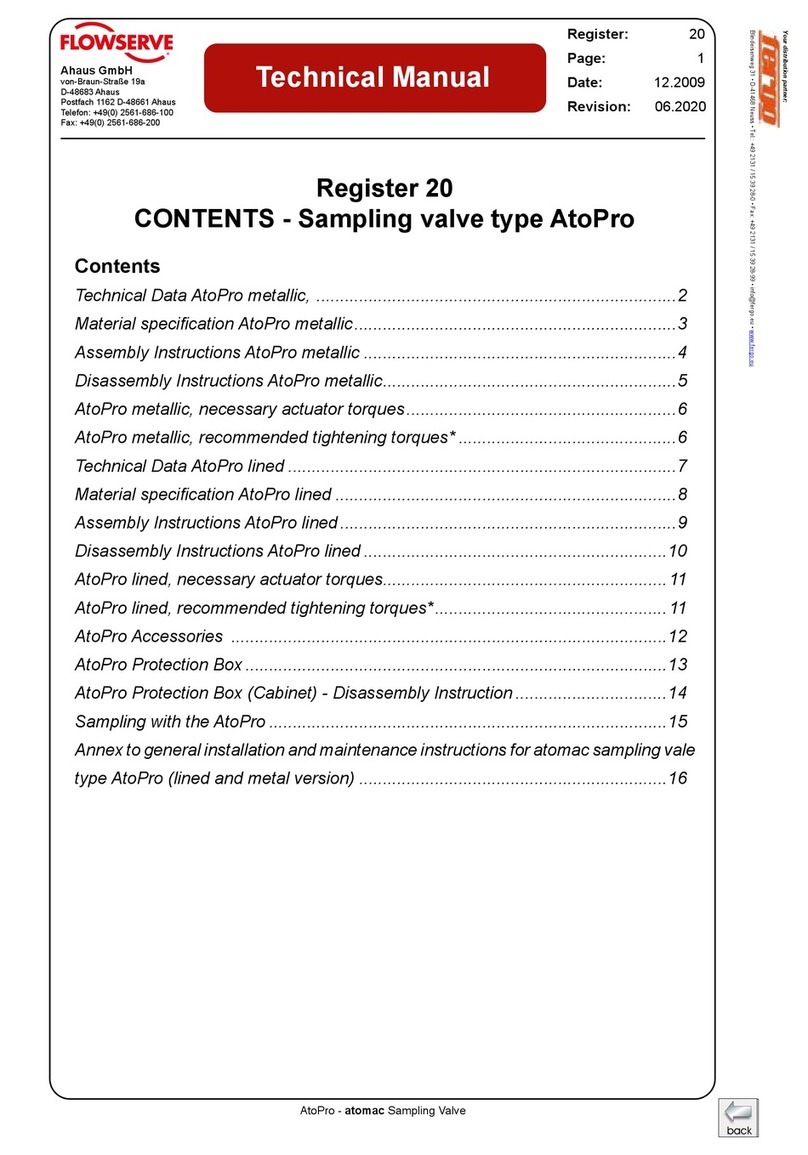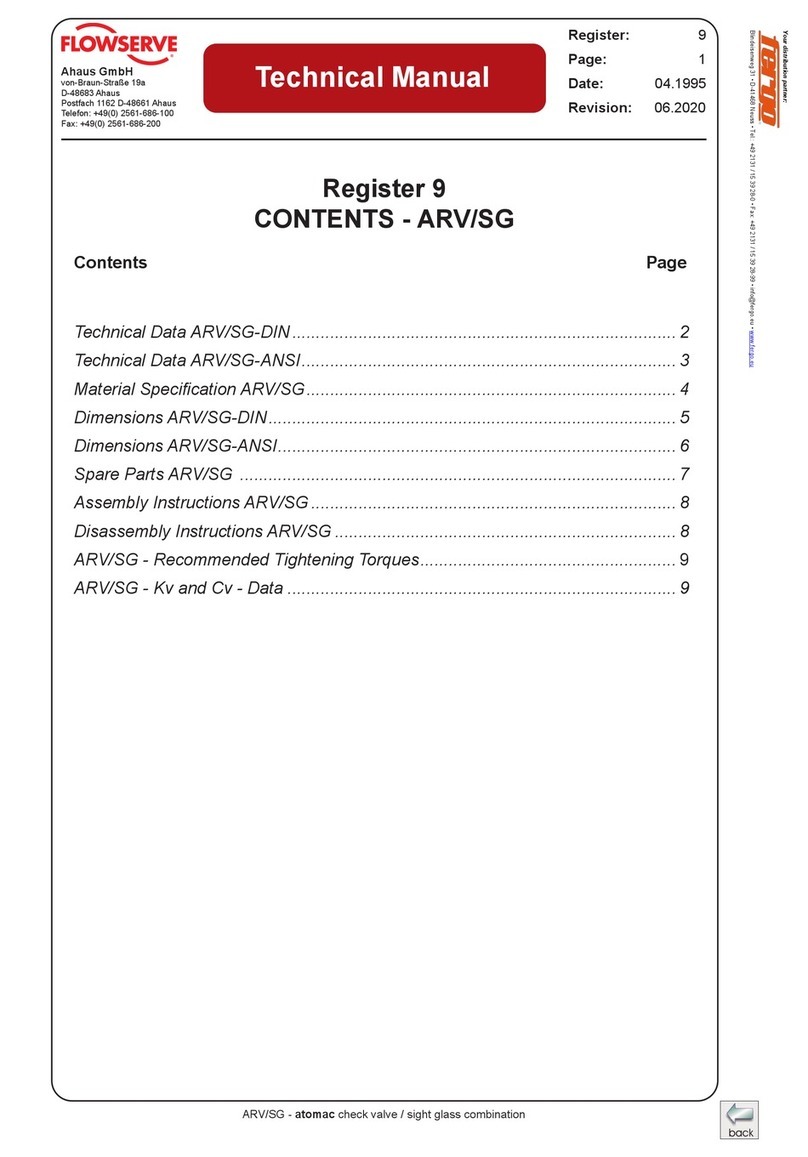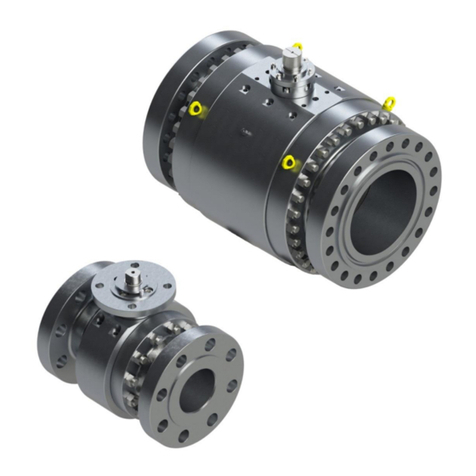
12-8
8. Remove the upper housing clamps or flanges (if
separable) and slide the bellows seal bonnet off
thebellowssealstem. Careshouldbetakennotto
lose the anti-rotation pin from the upper seal. The
packing,packingspacer,andstemguidescannow
be removed for inspection or replacement.
9. Removetheboltingfromthelowerhousingclamps
or flanges. Remove the clamps or flanges (if
separable) from the assembly.
WARNING: Toxicprocessfluidmaybetrapped
inside the bellows housing. Although previ-
ouslydecontaminated,care shouldbetaken to
prevent exposure to toxic residues.
10. Slide the body bonnet down until it makes contact
with the plug head, exposing the stem locknut
between the body bonnet and bellows seal stem.
Using a wrench on the flats, loosen the stem
locknut.
11. Screw the plug stem out of the bellows seal stem
and separate the bonnet and plug from the metal
bellowsassembly. Remove thebonnetspring guide
retainer and guide for inspection or replacement.
12. Remove the metal bellows assembly by carefully
pulling the assembly through the housing.
13. Remove both upper seal ring gaskets from the
upper seal ring.
14. Removethelowerhousinggasketfrom the housing.
15. Remove the seat ring, seat retainer, seat ring
gasket,andbonnetgasketfromthebody. Referto
Maintenance Instructions 1 for further details.
Reassembling Formed Metal Bellows Seal
To reassemble the formed metal bellows seal, refer to
Figures 4 and 5 and proceed as follows:
1. Check the metal bellows for signs of wear or
damage. If the bellows shows signs of fatigue or
cracking, obtain a replacement before reassem-
bling and operating the valve.
2. Install new upper seal gasket “A” in the recessed
areaoftheupper(orlarger)endofthebellowsseal
housing.
3. Insert the metal bellows seal assembly into the
housing, making sure the upper seal ring gasket
properly engages the upper seal ring.
4. Install the lower guide and spring guide retainer in
the body bonnet.
5. Place the lower housing gasket into the recessed
gasket surface on the lower (or smaller) end of the
housing.
6. Slide the plug stem through the body bonnet.
7. Makesuretheseparableflangesandhalfringsare
positionedonthehousingandbonnet. Thebonnet
flange should also be positioned on the bonnet.
8. Install the stem locknut on the plug stem. Screw
the plug stem into the bellows seal stem. Proper
engagement of the plug stem is achieved when
there is approximately 1/8-inch of space in the slot
above the anti-rotation pin when the plug is fully
extended or in the seated position (refer to Figure
5). To determine the correct location of the ex-
tended plug, fit the bonnet and housing loosely
togetherusingthelowerhousingclampsorflanges.
Screw the plug clockwise into the bellows stem
until the 1/8-inch clearance is achieved above the
anti-rotation pin. When in the fully extended posi-
tion, measure the distance from the back of the
plug head to the bottom of the bonnet. This
distance should correspond to the stroke of the
valve plus 1/16-inch. These measurements are
found in Table II. If adjustment is needed, turn the
plug head so that the plug stem screws in or out of
the bellows seal stem until the proper measure-
ment is reached. Double check to be sure the 1/8-
inch clearance still remains.
9. Remove the lower housing clamp or flange bolting
and pull the bonnet and housing apart, exposing
the plug stem. Tighten the locknut firmly against
thebellowssealstem,usingtwowrenches:oneon
thenutandtheotheronthebellowssealstemflats.
10. Thehousingcannowbeboltedtothebonnetusing
the lower housing clamps or flanges. At this point,
the bolting should be finger-tight.
NOTE: Be certain the anti-rotation pin is still in
place before proceeding to step 11.
11. After placing upper seal gasket “B” on the upper
seal ring, insert the bellows seal bonnet over the
bellows seal/plug assembly and onto the upper
seal ring.
12. If the packing has been removed for replacement,
replacethepacking,packingspacer,andguidesin
the correct order in the bellows seal bonnet by
referring to Figure 4. For non-standard packing
configurations, refer to Maintenance Instructions
1.
13. Position the upper housing clamps or flanges and
bolt them together. Bolting should be finger-tight.
14. Before turning the actuator back onto the bellows
seal stem, be certain the stem clamp and gland
flange are in place.
15. Forcorrectstemengagementonair-to-openvalves,
turn the actuator stem onto the bellows seal stem
until about 1/16-inch of space is left between the
bottomofthe yoke and the shoulder of the bellows
sealbonnet. Applyairpressureunderthepistonto
driveit up approximately1/4-inch. Thiswillseatthe
yoke on the bellows seal bonnet and provide the
properclearancebetweenthepistonandthetopof
the yoke.
